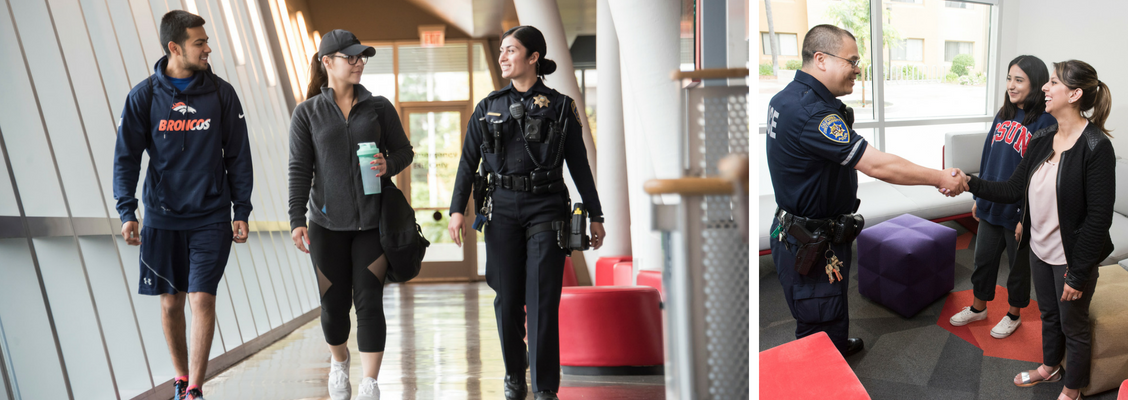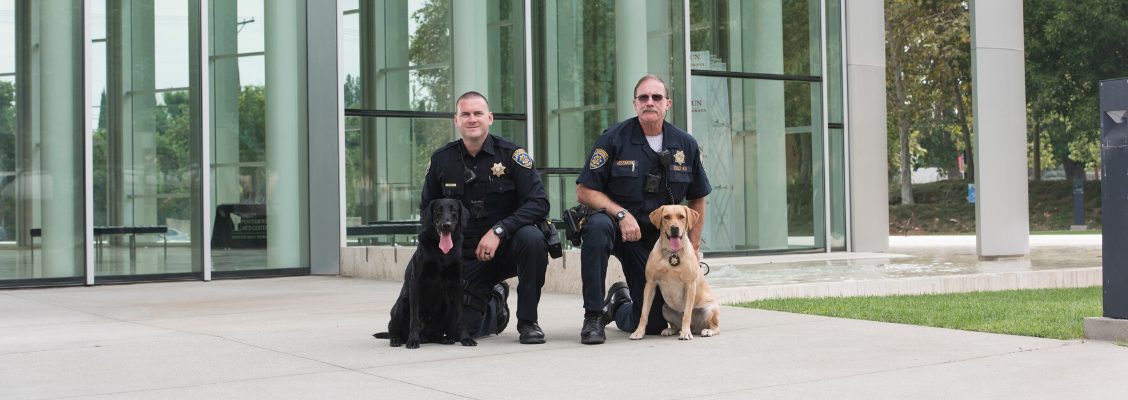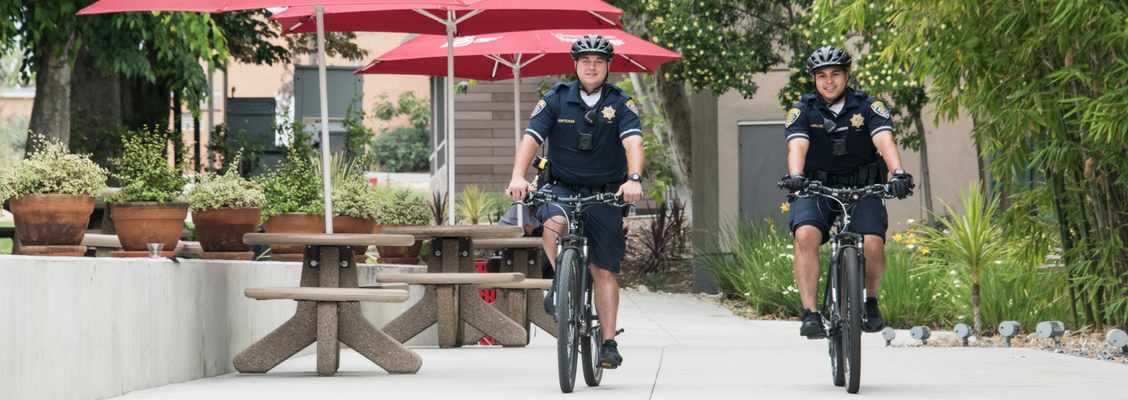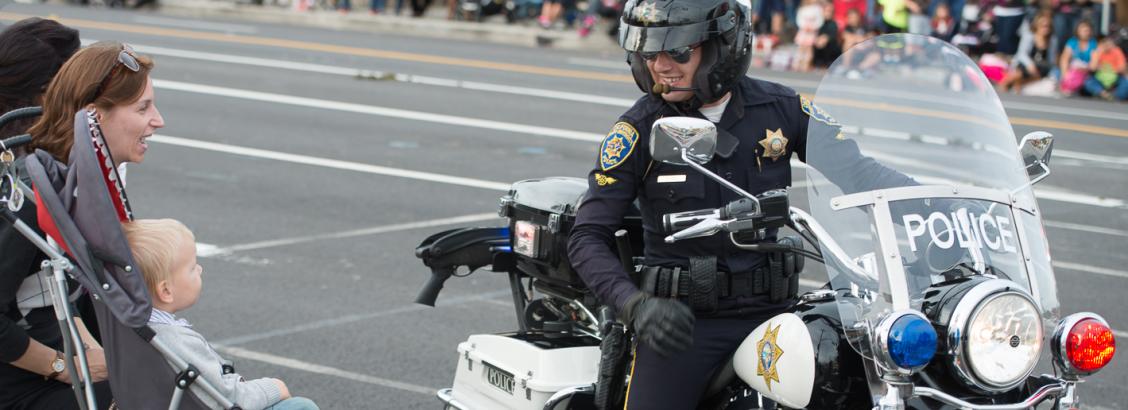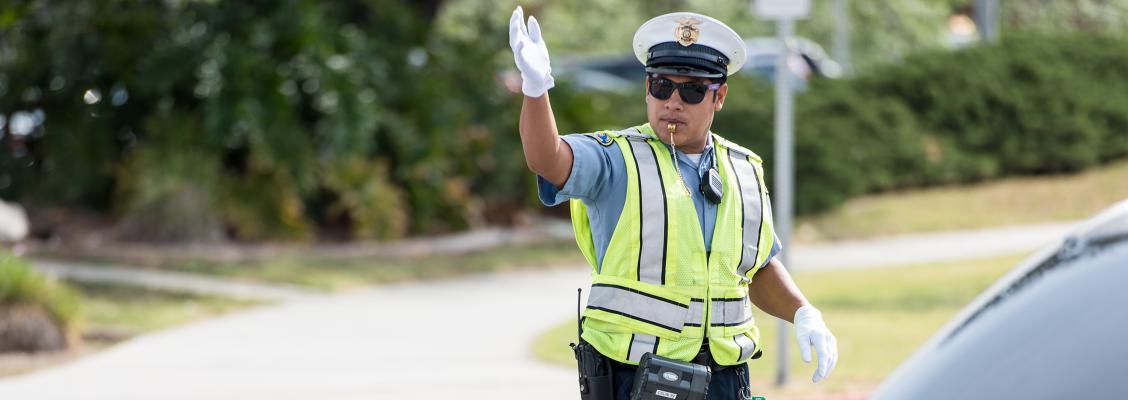Read the original CSUN Sundial Article by Shira Moskowitz
Despite a federal law known as the Jeanne Clery Act, which requires college campuses to notify every sexual assault case to the U.S. Department of Education, colleges nationwide have admitted that they have underreported the number of cases in recent years.
The lack of action by colleges has raised questions regarding student safety and protection.
CSUN graphic design major, Daniella Brahms, 21, said this is why young women need to be aware of their surroundings.
“It’s hard to stop the men who will be doing these things so we need to tell the women to be aware and don’t be on your earphones and pay attention to what’s around you and be aware of your surroundings,” Brahms said.
Crimes on Campus; Are students safe
According to the Clery Center for Security on Campus, the Jeanne Clery Act requires college and universities in the U.S. to disclose information about crime on their campuses as well as provide victims of sexual assault certain basic rights such as counseling services.
The University of Southern California (USC) and Occidental College have admitted to not reporting several reported sexual assault crimes according to a recent article in the Los Angeles Times.
USC did not report 13 accounts of sexual assault for the years 2010 and 2011, while Occidental College said it failed to report 24 sexual assault incidents during the same time period.
Anne Glavin, CSUN Chief of Police, said sexual assault crimes are most prevalent at the beginning of the school year among freshmen who live on campus housing.
“It’s their first time away from home and they go to parties either in the dorms or off campus and they are mixing with people they don’t know too well. Sometimes you invite somebody back up to your room after the party thinking that you can trust them and you don’t know them that well and then things go sideways,” Glavin said.
The CSUN 2010-2012 Clery report stated there were four campus rapes reported in 2010, none in 2011 and three in 2012. Furthermore, there were four reported incidents of forcible fondling in both 2010 and 2012 and two reported incidents of on campus dating violence in 2012.
On March 1, 2013, President Obama signed a bill that included the Campus Sexual Violence Elimination Act (SaVE), which will amend the Jeanne Clery act to include statistics about sexual assault, rape and dating violence as well as assistance to the students or employees who reported victimization. A rape victim must also be provided with the ability to receive services from a rape crisis advocate, according to California Penal Code Section 264.2.
“The CSUN police department has a rape crisis advocate on staff if requested and have their first line responding officers trained how to handle sexual assault cases,” Glavin said.
Brahms said that even though she doesn’t spend a lot of time on campus, there have been times where she felt unsafe.
“When I have classes that are in the late afternoon I did feel weird because there was no one around and there aren’t that many of those blue emergency boxes, so I felt really scared,” said Brahms.
College-Aged Women: The Largest Group of Victims
In a national representative survey of adults, 37.4 percent of female rape victims were first raped between the ages of 18-24, the average age of most college students, according to the CDC. The CDC also reports that 19 percent of undergraduate women experienced “attempted or completed sexual assault since entering college.”
“College students are the most vulnerable group because they have the least amount of life experience. If you’re not informed and you’re in the age group that sexual assault happens to a lot, your risk is higher,” Glavin said.
CSUN’s Project D.A.T.E, a project devoted to preventing date and acquaintance rape, sponsored by the University Counseling Services and Valley Trauma Center, reports that 85 percent of the rapes that occur on college campuses are committed by someone who the victim is acquainted with and 25 percent of all college women report experiencing acquaintance rape or attempted rape.
Marianna Galadjian, a CSUN graduating senior majoring said that girls are targeted on college campuses because society has labeled them as “damsels in distress, making them seem weak and easy to target,” while men are viewed as being dominant.
“Men are supposed to be strong and powerful, so to them being targeted for sexual assault isn’t as realistic as it is for a girl to be attacked,” said Galadjian.
While Glavin understands that college aged students are trying to meet new people and friends at parties and social functions, she said it’s an area where students must be careful of trusting too easily.
“Trusting too quickly and bringing someone back to your room or going to somebody’s apartment or frat house where you don’t have a bystander that can be there with you and help watch for your safety is an issue,” Glavin said. “It’s a tough thing to think or talk about because we all want to mix and socialize with people, but it’s an area where you have to be careful.”
Brahms said that because women are viewed as being the weaker sex, they are already a target for sexual assault and therefore need to take extra precaution while on campus alone.
“ A lot of times I see girls in the middle of the night walking around campus with their earphones on and they’re not paying attention to what’s around them and that’s just being an easy target. Anyone can come grab them or do something to them if they are walking by a dark area. They wouldn’t even be able to hear if someone was behind them,” Brahm said.
Cartier personally knows two college students who have recently been sexually assaulted at other campuses and believes the reason college women are targeted is because people know that often times in dorms or apartments, there is not always someone waiting for them to come home.
“Universities provide a place where people know that there is a lot of women who go there who are not connected to their biological families and communities necessarily. And unfortunately. women don’t have the same ability to have freedom the way men do and it’s really horrible,” said Cartier.
Date rape drug
According to Dr. Marie Cartier, CSUN professor of gender and women’s studies, the date rape drug is one of the biggest issues with sexual assault on college campuses today and even knows one person who has been drugged by it.
Date rape drugs are usually slipped into a drink and don’t have a taste, smell or color, making it impossible to know if you’re being drugged, said Womenshealth.gov. The drugs make you “weak and confused — or even pass out — so that you are unable to refuse sex or defend yourself. If you are drugged, you might not remember what happened while you were drugged,” the website said.
“If you go to a college party it’s easy to get your drink drugged. For many women, college is the first time they get to explore their freedom. Unfortunately, many women get caught on the wrong side of being able to explore their freedom like innocently going to a party where someone slips the rape drug in their drink,” Cartier said.
Glavin also confirms that the use of the date rape drug has increased over the past few years on college campuses and particularly at college parties.
“The date rape drug is a big deal and it tends to present itself more at parties and functions. We always tell people if there’s a communal punch bowl at a party that they should not drink it. Make sure there is a seal on your beer or water bottle and never let that drink out of your sight,” Glavin said.
According to the Rape, Abuse and Incest National Network, (RAINN), someone is assaulted every two minutes in the U.S, but 60 percent of those sexual assaults are not reported to police. However, the number of sexual assault cases has fallen over 50 percent in recent years.
As of 2012, 18.3 percent of women and 1.4 percent of men report experiencing rape at some time in their lives, making women the most targeted victims.
Sexual Assaults: A Grossly Underreported Crime
Cartier believes one of the reasons women do not report such crimes is because they are natural nurturers and are taught to not fight back.
“Women are trained to be nurturing so we want to try to find out why. Why did this happen to me? We’re trained to think, ‘I’ve already been hurt this much, so if I fight back, it will only hurt me more,’” Cartier said.
Maggie Stoicof, instructor and director for Project D.A.T.E, who is also a family and marriage therapist trainee at the Valley Trauma Center and a rape crisis counselor, said that in her experience, acquaintance rape is one of the hardest crimes for victims to report.
“What happens with acquaintance rape is that the closer the relationship between the survivor and the perpetrator are, the less likely they are to report the crime. If it’s a family member and they’re reporting can you imagine what kinds of things will happen between that family?,” Stoicof said.
According to Glavin, sexual assault crimes being underreported was even an issue as far back as 1975 when she first became a police officer. Unfortunately, she said nothing has changed.
“There’s a lot of embarrassment with it, there’s a lot of self blame that goes with it and there’s fear involved when you become victimized like that. It’s not easy to talk about someone sexually assaulting you,” Glavin said.
Glavin also believes that a big reason why many victims do not report the crime is because of the personal and extensive medical tests they must go through to make their case plausible in a court of law.
“If your attacker is identified and you want to move forward in the court process, you have to undergo medical exams and forensic exams in the hospital and that’s daunting to people,” Glavin said.
However, although not reporting sexual assault crimes is still an issue, she does believe the criminal justice system has improved the way they deal with the cases that are reported.
“The criminal justice system now is not so anti-victim and they don’t have the victim feel like they are getting victimized all over again. Today they have rape victim advocates, which they didn’t have in 1975 when I was doing things,” Glavin said.
For men who are victims of sexual assault, Stoicof said it can be especially difficult for them to come forward due to the stigmas that come along with a male victim.
“For men, there’s that macho perspective that a man can’t get raped and that it’s not possible for a man to get raped, but that is not true,” Stoicof said. “And so they have to be able to be prepared to deal with that negative stereotype and stigma that people attach to them.”
Social Media And The Internet’s Effects
Stoicof believes that the media has glamorized rape and sexual assault especially through song lyrics.
“Rape culture is anything that society normalizes or excuses in the media or in popular culture that perpetuate things like language or songs that tell women and men how to look. It is also sexually explicit jokes geared towards both males and females,” Stoicof said.
Songs that glorify sexual violence are one the biggest issues with media and rape culture today, said Stoicof. “There are a lot of songs that talk about doing a drug and then taking advantage of people. A lot of times what we’re listening to is rape culture or supporting rape culture.”
Galadjian said the media is a big reason why women are viewed as weak.
“I think these ideas about men being strong and women being weak are results of the media giving into our patriarchal nation,” said Galadjian. “If they show women as being strong and men as being vulnerable then that is how society will eventually see it too.”
Furthermore, Stoicof said that technology plays a big role in today’s sexual assault crimes. Sexting and video voyeurism, recording someone without their knowledge and then posting it online, have become increasingly popular crimes recently, some of which Stoicof said she has seen lead to suicide.
Although she was not able to confirm which college the victim is attending, Stoicof did say she has recently counseled a college-aged girl who was fell victim to a sexual assault crime through the use of technology. The female student was unconscious while a group of males took sexually explicit photos of her, some with very little clothing and some without her clothing at all.
“She was in treatment for depression and also started drinking more to cope with her depressed feelings until she came in for therapy,” Stoicof said. It was devastating for her because she no longer wanted to go out with her friends.”
Unfortunately, in this specific case, the perpetrators were not prosecuted, something that Stoicof said is not a rare occurrence.
“A very small percentage of sexual assault perpetrators will even serve time for the crime they committed. That’s why it’s very important to educate people on preserving evidence,” Stoicof said.
Only three out of every 100 reported rapists will ever serve time, RAINN reports.
Along with information about the date rape drug and how to use it online, one of the biggest issues with women coming forward and reporting sexual assault to the police is the fact that with social media and the internet, they no longer have privacy that protects them said Cartier.
“The ability to slam somebody on the internet is available now too and that was not accessible in a way that it’s accessible now before the internet,” Cartier said. “You can really slam somebody as a slut, or as easy and it can go viral in a small campus environment.”
According to Glavin, social media sites that connect people together also play a role in the increasing numbers of sexual assault crimes.
“Social media brings people together but you don’t really know somebody. A person may not be what they appear but you reach out and try to get to know them anyway. How can you get to know someone electronically,?” Glavin said.
Sexual Violence: A Crime About Domination and Power
Dr. Kristyan Kouri, CSUN women’s studies professor, said that sexual violence against women is not a sexual matter.
“It’s about anger, rage and domination, and men show their dominance over women by forcing them to have sex with them,” Kouri said.
According to Acquaintance Rape The Silent Epidemic, a publication put together by the CSUN department of police services, through different cultural and social messages, many men are taught that aggressiveness is OK and that women want to be dominated.
According to the publication, “men who rape are seen not merely as rambunctious men, but as people who are violently out of control and for whom force is something the only way they get what they want.”
Nicholas Groth, a clinical psychologist and former co-director of the Sex Offender Program at Somers State Prison in Connecticut said in the publication that “rape is the sexual expression of aggression rather than the aggressive expression of sexuality.”
Glavin believes that the rape drug is used specifically for the attacker to gain more power over their victim.
“They want to knock down your defenses because then it’s easier for them to do what they want to do. It’s about their power over yours. By giving you the date rape drug they now have lowered your ability to understand what’s going on and they’ve lowered your ability to fight back. We are talking about power and uneven matrix,” Glavin said.
Glavin said the best way CSUN students can protect themselves from such crimes is to educate themselves.
“Educate yourself. It’s a matter of understanding the situations in which people become most victimized. Read what there is, understand it, and then when you go out into the world out there and you want to meet people, you will know where the red flags are,” Glavin said.



